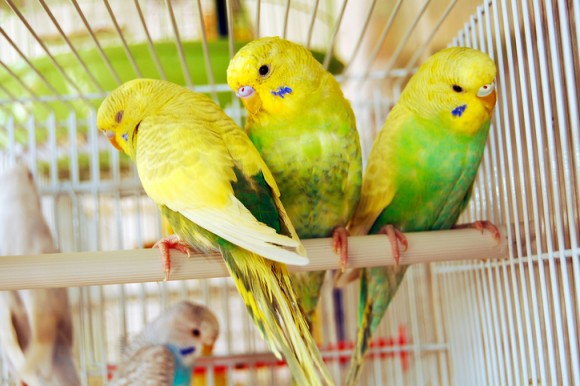When Jake Willhoite moved his two macaw parrots 300 miles from Dallas to San Antonio, TX, in 2016, it was a “long day in the U-Haul,” he admits. Still, at trip’s end, “both birds fared well,” says Willhoite, CEO of Bird Cages Now.
It took Willhoite’s birds a few days to adjust in their new home but overall, the process was a smooth transition.
If you get nervous every time you think about moving a long distance with your birds, don’t try to wing it without reading these tips to make traveling with birds as stress-free as possible:
Acclimate Your Bird
If you’re getting ready to take your pet bird on a relocation journey, it’s crucial to get your bird (or birds) used to the car before moving day, says Willhoite. Start off with a spin around the block and gradually build up to longer drives. You bird needs to get used to the new automobile environment.
Keep Things Familiar
The biggest key to moving with pet birds is ensuring that they have as consistent an environment as possible. “Keeping the same toys that they’re familiar with in the cage will help keep the bird more relaxed throughout the process,” says Willhoite. “Otherwise, they’ll constantly be in alert-mode while re-calibrating to new surroundings.”
Use a Travel Appropriate Cage
Your bird’s regular cage is heavy and awkward and will take up valuable space in your vehicle. You can purchase an inexpensive travel cage for shorter trips or one that’s a lot nicer for long distances. A travel cage is smaller, lighter and will easily fit in your car’s floorboard, says Willhoite. Use the travel cage for pre-trip acclimation rides too.
Keep the Bird Caged
While you may be tempted to let your travel-weary cockatoo spread his wings, don’t do it. He’s not used to the car, and it’s dangerous for both you and the bird.
Hydrate and Feed
To keep the cage and your car seat dry, pet education site Drs Foster & Smith recommends using a water bottle (instead of a water cup) and a seed guard on the cage to cut down on messes. Here are some other tips:
- Use deep food cups secured to the cage or crate.
- Provide one dish for your bird’s regular diet (pellets/seeds) and one for fresh vegetables.
- Give your bird pieces of juicy fruit (such as grapes or melon) to keep him hydrated.
Bird-friendly Hotels
Hotels with pet-friendly policies such as Motel 6 and many Best Westerns generally accept birds as guests. However, La Quinta, which accepts cats and dogs, doesn’t allow birds. Call ahead to check whether your bird is welcome before making reservations.
Check Travel Restrictions
Depending on which species of bird you have, some states you’re traveling through may require a health certificate of veterinary inspection for the bird. Some countries and states may even require your bird to be placed in quarantine before departure or upon arrival, according to the American Veterinary Medical Association. Check with the US Department of Agriculture or your state’s animal health officials before traveling.
Take Bird Breaks
Stop often to stretch your legs and attend to your bird’s needs.
“Ideally you want to make a pit stop every 60-90 minutes, but try to avoid staying on the road for over two hours at a time,” says Willhoite.
Disclaimer: We are a participant in affiliate advertising programs designed to provide a means for us to earn fees by linking to affiliated sites.




